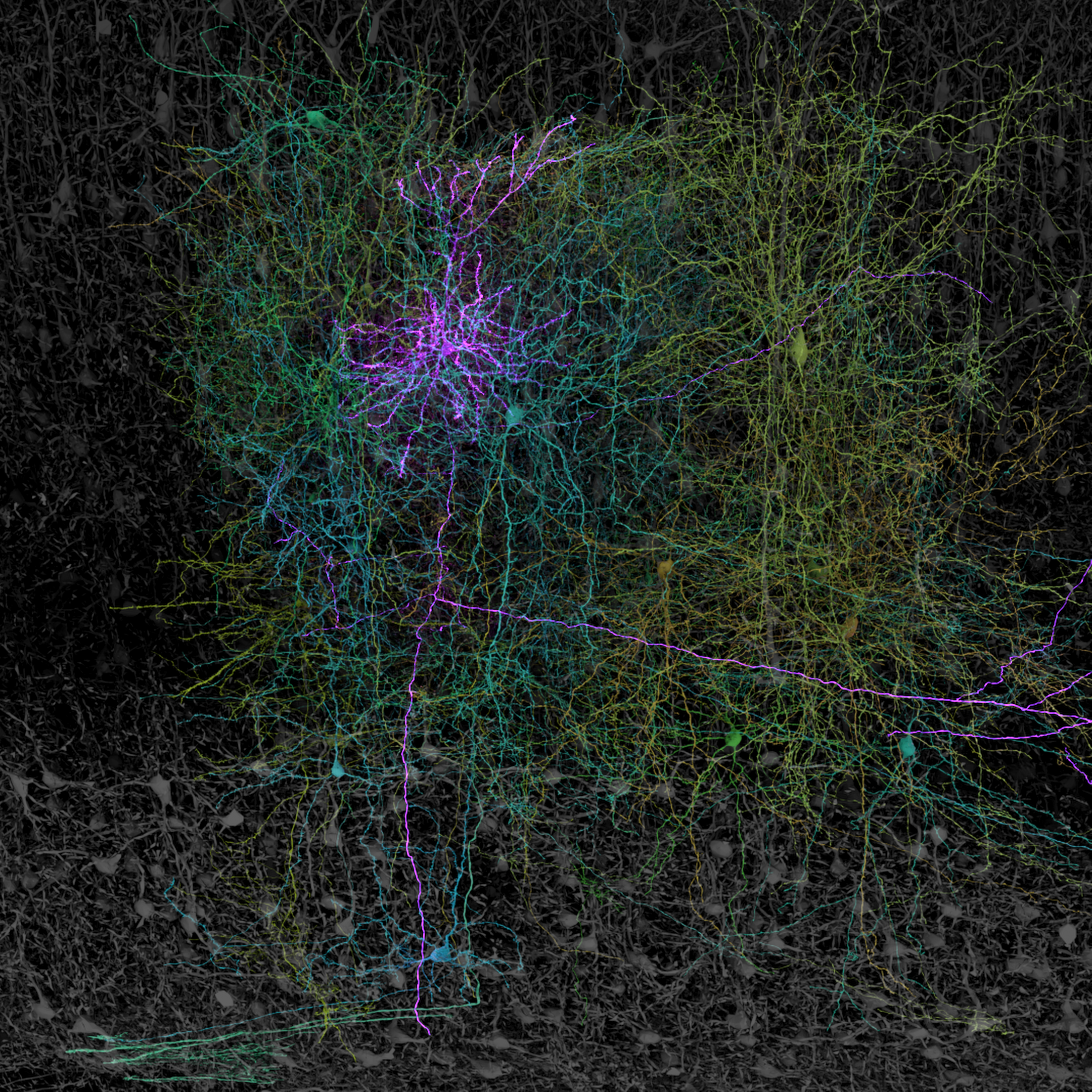We investigate the organizational principles of neuronal circuits. Our goal is to understand the
mechanisms that shape neuronal circuits and the ways in which their structure supports complex
computations.
To achieve this, we develop computational approaches for reconstructing, annotating, and analyzing
connectomics datasets at synaptic resolution.
Research Areas
Connectome-enabled analysis of neuronal circuits
The advent of synaptic wiring diagrams is revolutionizing how neuronal circuits are
analyzed. In the fruit fly, where a whole-brain connectome is now
available, almost all
analyses use the connectome in some form. The same revolution is coming to the mammalian
circuits for which partial
connectomes spanning up to 1 mm3 have just been
created. We
devise new analyses and approaches to interpret these connectomes, extract the
organizational principles of mammalian circuits, and model how their structure supports
complex computations.
Scaling to connectomes of whole mammalian brains
As imaging technologies have advanced to acquire larger samples of brain tissue at synapse
resolution, connectomics is increasingly bottlenecked by our ability to reconstruct and
annotate the neuronal circuits within them. Current approaches are sufficient to reconstruct
fly-scale connectomes with 10s of person-years of manual labor, but are still too costly
even to reconstruct the largest connectomics datasets to date. To scale connectomics to
whole mouse brains, we work on a new generation of machine learning approaches for the
reconstruction of neurons and annotations of all their features.
Towards multi-modal circuit analyses: Linking connectomes to other
modalities
Comprehensive knowledge about the cell types that constitute the molecular and anatomical
architecture of the brain is crucial to understanding how brain functions emerge from its
circuits. Transcriptomic information enables us to link cells to specific molecules and
genetic tools. We develop machine learning approaches that bridge between connectomics
datasets and cellular datasets of other domains, such as patch-seq, to create multi-modal
connectomics datasets.
Computational and team science approaches for connectome reconstruction
Reconstruction, annotation, and analysis of connectomic datasets is a complicated interplay
between computational models and communities of human experts. We develop computational
approaches to enable these collaborative communities and make connectomics datasets broadly
available and analyzable. For instance, together with our collaborators at the Allen
Institute for Brain Science and Zetta AI, we develop and maintain the Connectome
Annotation
Versioning Engine (CAVE), a software infrastructure that hosts many connectomics
datasets
across the connectomics field. CAVE provides a backbone for connectomics analyses by
enabling scalable solutions for proofreading and flexible annotation support for fast
analysis queries at arbitrary time points.
